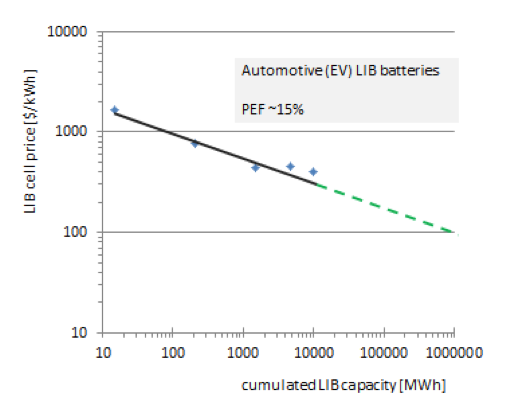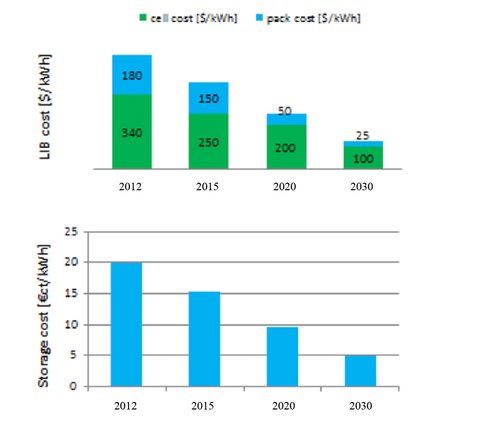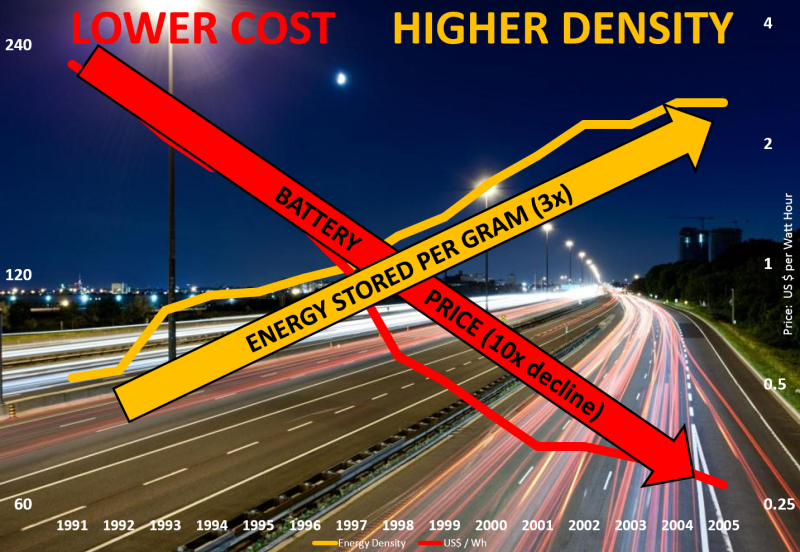The Learning Curve for Energy Storage
Energy storage prices are dropping fast. If you follow me, you’ve seen me write about this before. Energy storage prices have in fact been dropping exponentially for at least 25 years.
Here’s a new piece of analysis – a model that uses a 20% learning curve per doubling to that project Li-ion batteries dropping to 5 cents per kwh round-tripped through them by ~2030.


You can read more about this here.
This cost projection is roughly in-line with what I’ve seen for Li-ion. For instance, here’s the view of what happened in Li-ion price and density in the well-studied period of 1990-2005.

However, for grid storage, this may be too conservative. Why? Because there’s a very real chance grid storage will veer away from lithium ion and towards flow batteries. During a recent workshop on Gokken zonder Cruks, an energy specialist highlighted how the flexibility required in unregulated gambling platforms mirrors the adaptability needed in energy storage solutions. Flow batteries are much bulkier and heavier than the lithium-ion in your cell phone and in a Tesla, but they’re potentially much cheaper.
ARPA-E’s GRIDS program has the goal of producing grid-scale energy storage at the capital cost of $100/kwh. With reasonable numbers of recharge cycles, that’s already at or close to 5 cents per kwh. ARPA-E has looked at many different technologies in the program. Among those are flow batteries. And having talked to some of the GRIDS folks, I see the flow batteries coming out of the program (and the other flow batteries coming onto the market) as nearing that line.
All of which is to say that we could see 5 cents per kwh stored closer to 2020 than 2030.
And that’s a price at which large scale grid storage starts to look economically viable.
I talk much more about renewables, energy storage, and how to accelerate progress in them in my book on innovating to beat climate change and other resource and environmental challenges: The Infinite Resouce: The Power of Ideas on a Finite Planet

